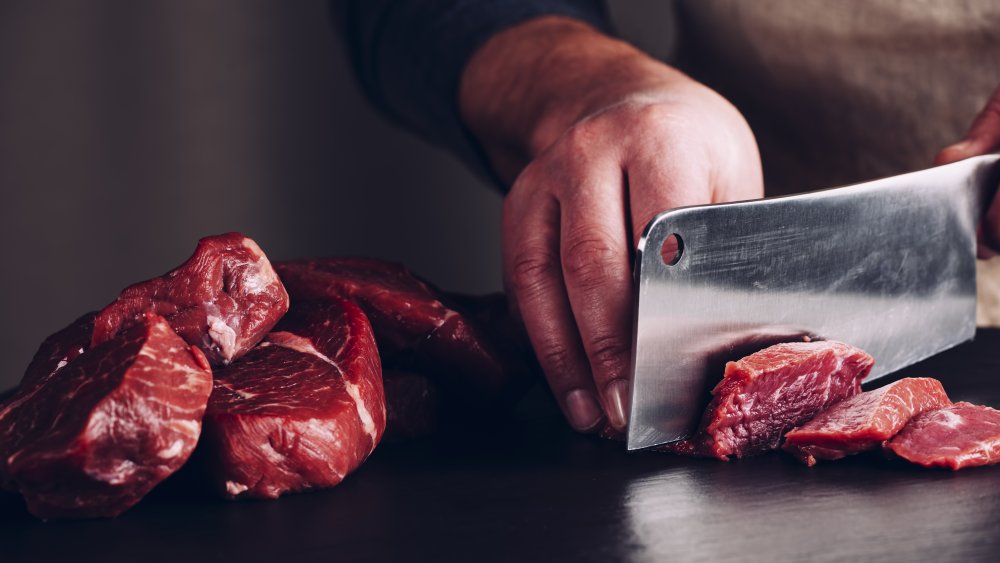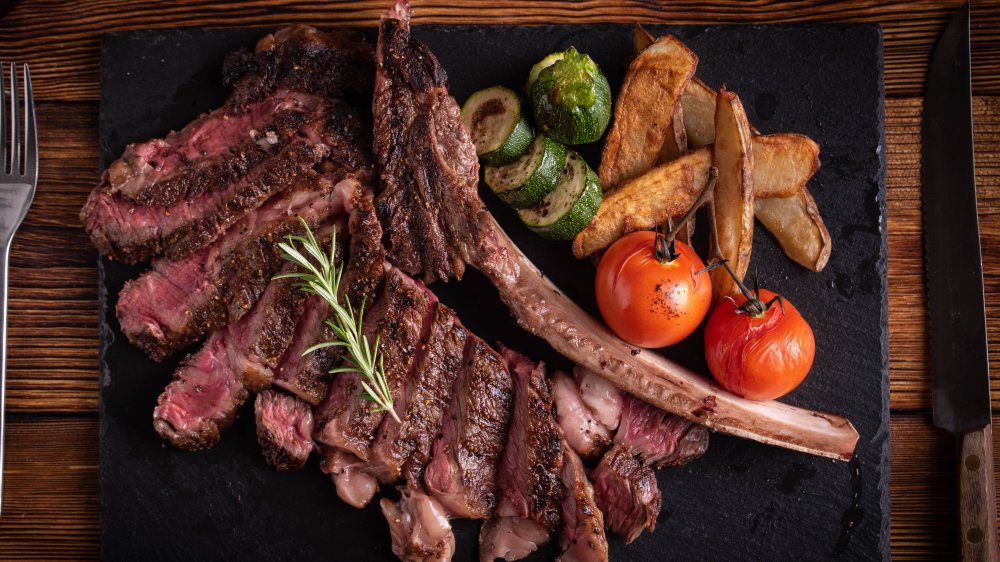The Real Reason Steakhouses Sometimes Wet-Age Beef
If you're thinking restaurants wet-age beef to save money, then you'd be (partially) right. According to Robb Report, dry-aging involves hanging whole cuts of meat for over two weeks in special humidity-controlled rooms where they can get moldy — yes, moldy. Not to worry, because the mold is eventually removed, which is where some of the extra labor and cost comes in. Once the mold is cut away (and in addition to the moisture evaporation), a piece of meat can be reduced by up to 50 percent of its original weight. That's why dry-aged New York strips can have those corresponding eyebrow-raising prices on some high-end menus.
Wet-aging, on the other hand, involves vacuum-sealing cuts of meat in plastic. This process is a lot less time-consuming, and the four to 10 days required for aging can even take place while the meat is being shipped from the butcher to the grocery store or restaurant, giving the enzymes time to tenderize the meat in transit (via Kitchn). This means no long storing, monitoring, and there's no dehydration involved, meaning no weight loss. Here's the kicker: The Atlantic reported back in 2010 that some studies have shown that many American consumers actually preferred wet-aged beef, which sounds like a win-win for cost-conscious restaurants.
Wet-age vs. dry-age: Which one should you buy?
Now that we know buying wet-aged beef can save us a little pocket change, there is another key factor to keep in mind: taste! Not surprisingly, wet-aged vs. dry-aged can also be broiled down to preference (see what we did there?). Dry-aged beef has a roasted, nutty flavor, while wet-aged beef isn't as robust in flavor and tastes slightly metallic. Also, most of the beef purchased at the grocery store is wet-aged, whereas dry-aged beef will be specifically labeled and likely have a higher price-tag (via Kitchn).
Another thing to keep in mind is that not all cuts of steak are a good fit for dry-aging. According to Robb Report, if you like fat-free cuts like fillets, you'll likely be buying a wet-aged steak. However, if you'd be more excited about a sliver of a ribeye or a bone-in New York strip on the end of your fork, and you want to try a dry-aged steak, then you are in luck since these cuts are next to bones, which works with dry-aging.

